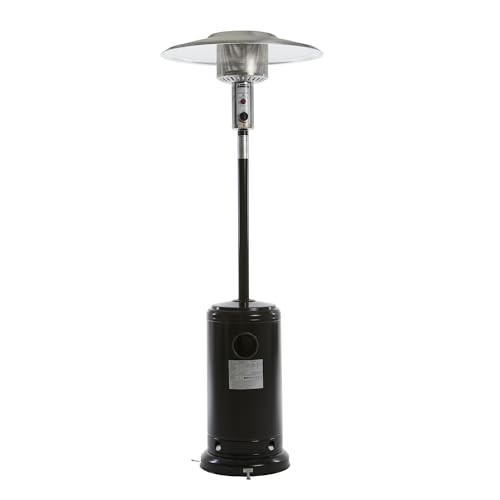11 “Faux Pas” That Actually Are Okay To Make With Your Patio Heating Systems
Patio Heating Systems: A Comprehensive Guide
As outdoor home develop into extensions of our homes, creating a comfy and inviting environment is vital. Among the most effective ways to attain this comfort is by carrying out patio heating systems. These systems permit friends and families to enjoy their outdoor spaces year-round, despite the chill of the night air. why not find out more will explore numerous patio heating systems offered, their functions, benefits, and essential factors to consider for choosing the ideal one.
Kinds Of Patio Heating Systems
Patio heating systems come in various types, each with its own special qualities. Below are a few of the most typical types:
Type
Description
Pros
Cons
Electric Patio Heaters
These heaters run utilizing electrical power and can be found in wall-mounted, portable, and freestanding models.
Easy to install and use; immediate heat; safe; low maintenance
Restricted heat variety; might increase electrical energy expense
Gas Patio Heaters
Generally powered by propane or natural gas, gas patio heaters provide considerable heat output and can cover big locations.
High heat output; can last longer than electric models; ideal for big events
Needs gas supply; can be less portable; security interest in gas leakages
Infrared Heaters
Infrared heaters release thermal radiation that straight warms items and people rather than the surrounding air.
Efficient; instant heat; minimal heat loss; environment-friendly options available
Restricted location of result; initial cost may be high
Fire Pits
Often made from stone or metal, fire pits supply heat and ambiance, producing a cozy environment.
Natural ambiance; flexible (cooking option); collect around for social interactions
Security risks with open flame; require wood or propane supply
Patio Umbrellas with Heaters
These are umbrellas fitted with built-in heating aspects, ideal for shaded locations.
Practical; combines shade and heating; portable
Less effective in windy conditions; restricted location; can be costly
Key Features to Consider
When picking a patio heater, it is vital to examine different functions based upon individual choices, budget plan, and outdoor space requirements. Here are some aspects to think about:
Heating Capacity: Measured in BTUs (British Thermal Units), this determines the heat output of the heater. Select a heater with sufficient BTUs for your outdoor size.
Fuel Type: Decide in between electric, gas, or wood-burning options based on convenience, accessibility, and effectiveness.
Portability: If movement is important, search for light-weight or wheeled designs for simple transportation.
Upkeep: Consider the upkeep required for each type. Electric heaters generally require less upkeep than gas or wood options.
Safety Features: Look for systems with security cut-offs, protective screens, and products that can endure outdoor conditions.
Benefits of Patio Heating Systems
Patio heating systems use numerous advantages, making it possible for property owners to take full advantage of using their outdoor living areas. Some benefits include:
- Extended Outdoor Use: Heaters enable more time invested outside, even during cooler seasons.
- Increased Comfort: Provide a warm and inviting environment for gatherings, celebrations, or peaceful evenings.
- Enhanced Aesthetics: Many heater designs include a stylish touch to outdoor decor.
- Increased Property Value: Homes with fully equipped outdoor spaces may draw in higher value and attract possible purchasers.
- Versatile Options: With numerous design and styles readily available, there is a heating service for every type of outdoor setting.
Frequently Asked Questions About Patio Heating Systems
1. How much does it cost to run a patio heater?
- Electric Models: This depends upon the regional electrical power rates and use time. Typically, running an electrical heater can cost in between ₤ 0.10 to ₤ 0.50 per hour.
- Gas Models: Propane expenses vary, but a 20-pound tank generally lasts about 8-10 hours, costing around ₤ 20-₤ 30 to fill.
2. Are patio heaters safe to use?
The majority of modern patio heaters are created with security features. Nevertheless, it's important to follow safety protocols, such as sticking to clearances from flammable objects, using on steady surface areas, and making sure proper ventilation for gas designs.
3. Do patio heaters work in windy conditions?
Many patio heaters can provide warmth in light winds, but strong gusts can lower their efficiency and safety. For high-wind locations, think about more steady designs or utilize wind guards.
4. Can I utilize a patio heater inside?
Utilizing outdoor heaters inside your home is not recommended due to carbon monoxide gas dangers, especially with gas heaters. Constantly confirm your heater's designated usage standards before installation.
5. How do I preserve my patio heating system?
Routine maintenance is important to guarantee longevity and efficiency:
- For electrical heaters, examine and clean up the heating element routinely.
- Gas heaters need to have their gas lines checked for leaks and filters cleaned up.
- Fire pits ought to be cleaned after use and looked for any residue or ash buildup.
Patio heating unit play a crucial role in changing outdoor areas into comfy and inviting environments. With a range of options, each with distinct advantages and features, homeowners can pick the ideal system based upon their needs, preferences, and specific outdoor conditions. By buying a trusted patio heater, one can maximize pleasure of their outdoor space throughout the year. Whether hosting summer season barbecues or cozying up on cool evenings, a warmed patio invites togetherness, relaxation, and enjoyment, making it a valuable addition to any home.
